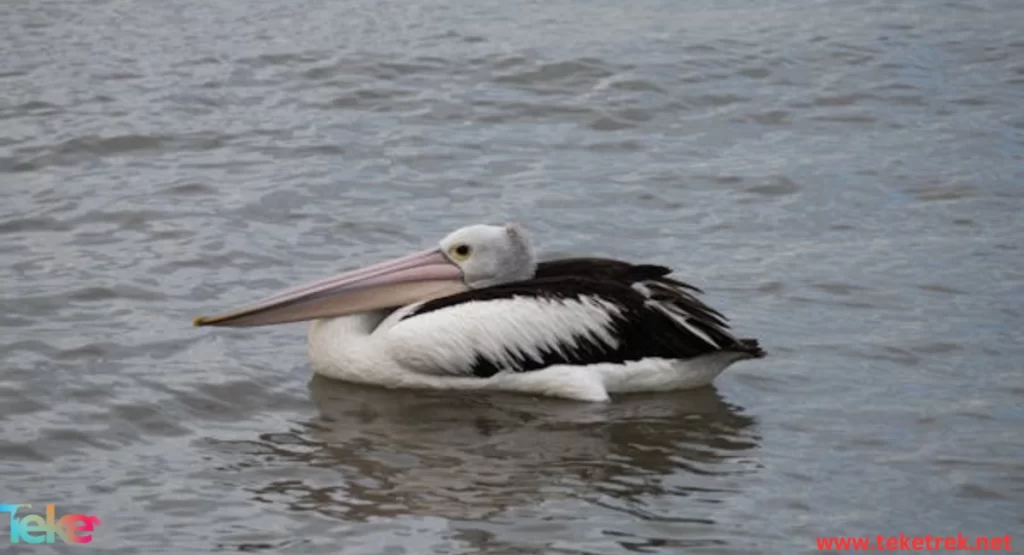The Peruvian pelican is a member of the brown pelican family found on the west coast of South America and breeds in loose colonies. The Peruvian pelican is a member of the Pelicanidae family and is classified as endangered by the IUCN.
Being a marine bird, the Peruvian Pelican can be spotted along coastlines, in bays, and at river mouths. However, it typically avoids open seas. Its breeding sites are often on rocky shores and remote islands to avoid predators.
Let’s learn more about it from teketrek.
Specifications of the Peruvian Pelican
Length and Size: The Peruvian Pelican typically ranges in length from approximately 137 cm to 152 cm, with a wingspan of about 228 cm. Its weight ranges between 5 kg to 7 kg.
Plumage: It has dark body plumage with varying shades of gray. The upperparts of the wings have pale silvery-white shoulder coverts and tertial feathers, while the median coverts and most of the smaller upperwing coverts are dull silvery-gray.
Tail and Underparts: It has a relatively short, rounded tail, similar in color to the body plumage. The abdomen is slightly darker than the wings and sides of the body, showing narrow white shaft streaks and some pale spots, giving a striped pattern.
Head: On the head, there is a pale yellowish-white crest that is taller at the beginning of the breeding season. The facial skin is black around the base of the bill, extending to the front of the eye, down to the chin, and throat.
Color: The Peruvian Pelican possesses a long bill with a distinctive white and vibrant color, with a red tip and a pale blue circular pouch. Some have black and creamy-yellow at the base.
The Peruvian Pelican has pale blue-gray eyes. The color of the legs and webbed feet ranges from olive-green to pale yellow.

What are the interesting facts about Peruvian pelicans?
Some of the important behaviors, fascinating facts, and interesting information about the Peruvian Pelican include:
Vocalizations: Peruvian Pelicans make hissing sounds and can also produce bill-clapping noises.
These noises often accompany displays of courtship and interactions between individuals. Additionally, young birds may emit cries, screams, and chatter, as well as barking and snoring sounds when hungry.
Water Drainage: After diving, Peruvian Pelicans drain water from their bills. Seagulls often attempt to steal fish from their pouches while they rest.
Incubation: It incubates its eggs with the tissues of its feet and stands on them primarily to keep them warm.
Diving Technique: While diving, Peruvian Pelicans bend their heads and twist their bodies to the left. This maneuver is likely aimed at protecting the air sac and esophagus located on the right side of the neck from impact.
Longevity: The oldest recorded Peruvian Pelican was 43 years old, indicating their potential for longevity.
These behaviors and facts highlight the unique characteristics and intriguing behaviors of the Peruvian Pelican.
https://teketrek.net/en/netherland-dwarf-rabbit/
Places where the Peruvian Pelican is found
The Peruvian Pelican is found on the western coast of South America from southern Ecuador and Peru, south to southern Chile, and sometimes to Tierra del Fuego. It breeds on the coasts from Lobos de Tierra Island in northern Peru to Isla Pupuya in central Chile.
https://teketrek.net/en/the-snowy-owl/
Diet of the Peruvian Pelican
The Peruvian Pelican feeds almost exclusively on Peruvian anchovies by diving into the water. They may also steal food from other bird. Unlike the Brown Pelican, it never dives from a great height to catch its food but instead dives from a shallow height or feeds while swimming on the surface. Once it catches its prey, it filters the water and swallows the fish whole. It may also catch prey while swimming on the water. It also feeds on other food sources such as chicks of the Imperial Cormorant, Peruvian pelican chicks, and the Gray Gull, in addition to benefiting from fish leftovers discarded by fishermen.

Reproduction Stages of the Peruvian Pelican
The primary breeding season for the Peruvian Pelican occurs from September to March in large coastal colonies. Typically, a female Peruvian Pelican lays two or three eggs. The eggs are incubated for approximately 4 to 5 weeks, and the breeding period lasts for about 3 months.
In conclusion, it is important to emphasize the significance of protecting this species of pelican from extinction. It is considered near threatened, and efforts must be made by countries and the International Union for Conservation of Nature to preserve it. We hope that we have provided you with valuable information and astonishing facts to help you gain a deeper understanding of the Peruvian Pelican.





